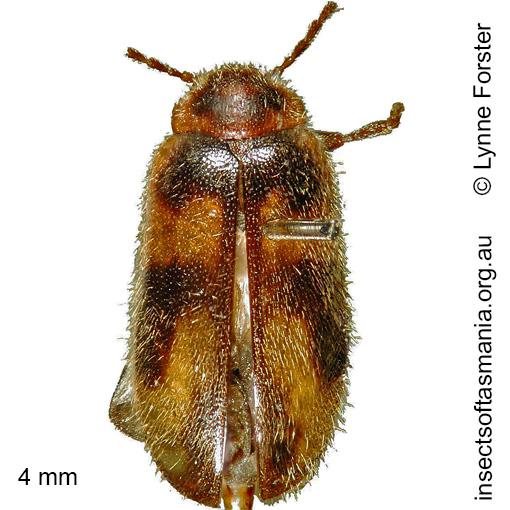
Accolabass rufusensis (Watts, 2007) (a species of marsh-beetle)
Basis for Tasmanian occurrence
Watts, C.H.S. (2007). Revision of Australian Pseudomicrocara Armstrong (Coleoptera: Scirtidae). Transactions of the Royal Society of South Australia 131(1): 1-82. (as Pseudomicrocara rufusensis)
TMAG collections
Classification
Order: Coleoptera
Suborder: Polyphaga
Superfamily: Scirtoidea
Family: Scirtidae
Morphology
Typical length (mm): 4
Flightedness: winged and assumed capable of flight
Source literature on morphology and taxonomy (*primary taxonomic source, where identified):
*Watts, C.H.S. (2007). Revision of Australian Pseudomicrocara Armstrong (Coleoptera: Scirtidae). Trans. Roy. Soc. S. Aust. 131 (1): 1-82.
Ecology
Assumed larval feeding: detritivore
Association with dead wood or old trees: not saproxylic
Ecological attributes: — May occupy logs or trunks of Eucalyptus obliqua, at least temporarily, since found having emerged within six years of felling (Grove et al., 2009).
Collection method(s) for TMAG material: — Emergence trapping from log of Eucalyptus obliqua — Hand collection from flowers of Eucryphia lucida (Ettershanks & Ettershanks, 1993) — Malaise trapping — Pitfall trapping — Vane trapping.
Source ecological literature:
Baker, S.C. (2006b). Ecology and conservation of ground-dwelling beetles in managed wet eucalypt forest: edge and riparian effects. PhD thesis, Univ. of Tasmania, Hobart.
Grove, S. et al. (2009). A long-term experimental study of saproxylic beetle … succession in Tasmanian Eucalyptus … logs… In: Fattorini, S. (Ed.), Insect Ecology and Conservation. Research Signpost, pp. 71-114.
Yee, M. (2005). The ecology and habitat requirements of saproxylic beetles native to Tasmanian wet eucalypt forests: potential impacts of commercial forestry practices. PhD thesis, Univ. of Tasmania, Hobart.

